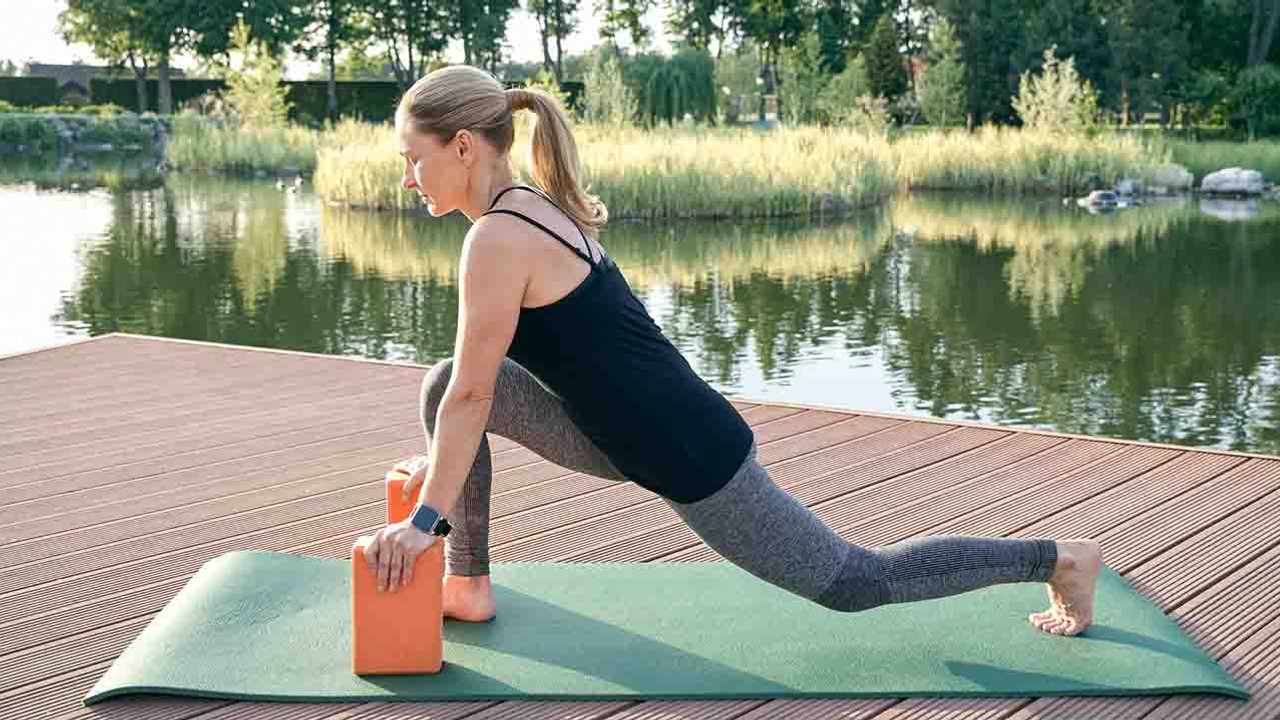Ditching Your Yoga 'Ego' (And Why It's Important)

Ever pushed yourself to do a yoga pose that didn't feel right for your body or resulted in you getting hurt? Do you watch what others are doing during yoga class and compare yourself to them?
The 'ego' is something that comes up for so many thanks to modern ideals and the way Western yoga is presented - so what is this ego all about and how can we ditch it when we get on our yoga mat?
Don't force your poses
Especially when you're in the presence of someone who is very experienced at yoga or particularly flexible, it can be easy to feel the urge to push yourself into a shape like theirs when you're doing poses together.
Every body is different, your flexibility and strength will improve over time (this is why we call it a yoga practice!), but forcing your body to do something it's not ready for will only lead to poor technique and possibly injury - especially with regards to your joints. It's better to meet your own body where it's at and honour any alarm bells or warnings it's giving you.
Using props isn't cheating!
Yoga blocks, bolsters, straps, mat towels, blankets... these are very useful tools that can be great in your everyday yoga practice even if a voice in the back of your mind is saying 'I don't need those, I can do the poses without props'.
For example, adding a thick folded blanket under your sitbones when you're sitting with crossed legs (Sukhasana) on the floor can be great for people with tight hips. But even if you don't have tight hips it can still help you sit more easefully for a longer period of time.
Adding a yoga block under your lower hand in Half Moon Pose (Ardha Chandrasana) can help add that little bit of extra support to prevent collapsing in the core so you can hold better alignment in your body. But even if you're experienced at this pose, the block could help you shift your focus from general balance to perfect technique.
Sometimes you need to dial it back
The harder or more difficult option isn't necessarily always the best. Yoga shouldn't be competitive, but Western ideals typically teach us to push harder, go further and do more (no pain, no gain!). Some of the best benefits of yoga are found in the more subtle approaches, and poses should never hurt.
It's often said that yoga is a great low impact form of exercise, but many people get injured performing more advanced versions of poses their body simply isn't ready to do, or by doing peak (particularly difficult) poses without adequately building up to them with warmup poses.
It can sometimes help to dial back your efforts so that you can focus on perfecting your technique and alignment - for example, master the half handstand against the wall before looking at doing the full unassisted handstand in the centre of the class.
You do you boo
Try not to be distracted by what others are doing on their yoga mats, how much higher your teacher is lifting their leg compared to yours in Standing Hand To Big Toe Pose, or what the Insta-influencers are doing for a good photo!
Yoga is meant to be an inward practice all about you, how cool is that?! Pay more attention to your breath, your body, your senses and see how your focus shifts.
Image / DepositPhotos









